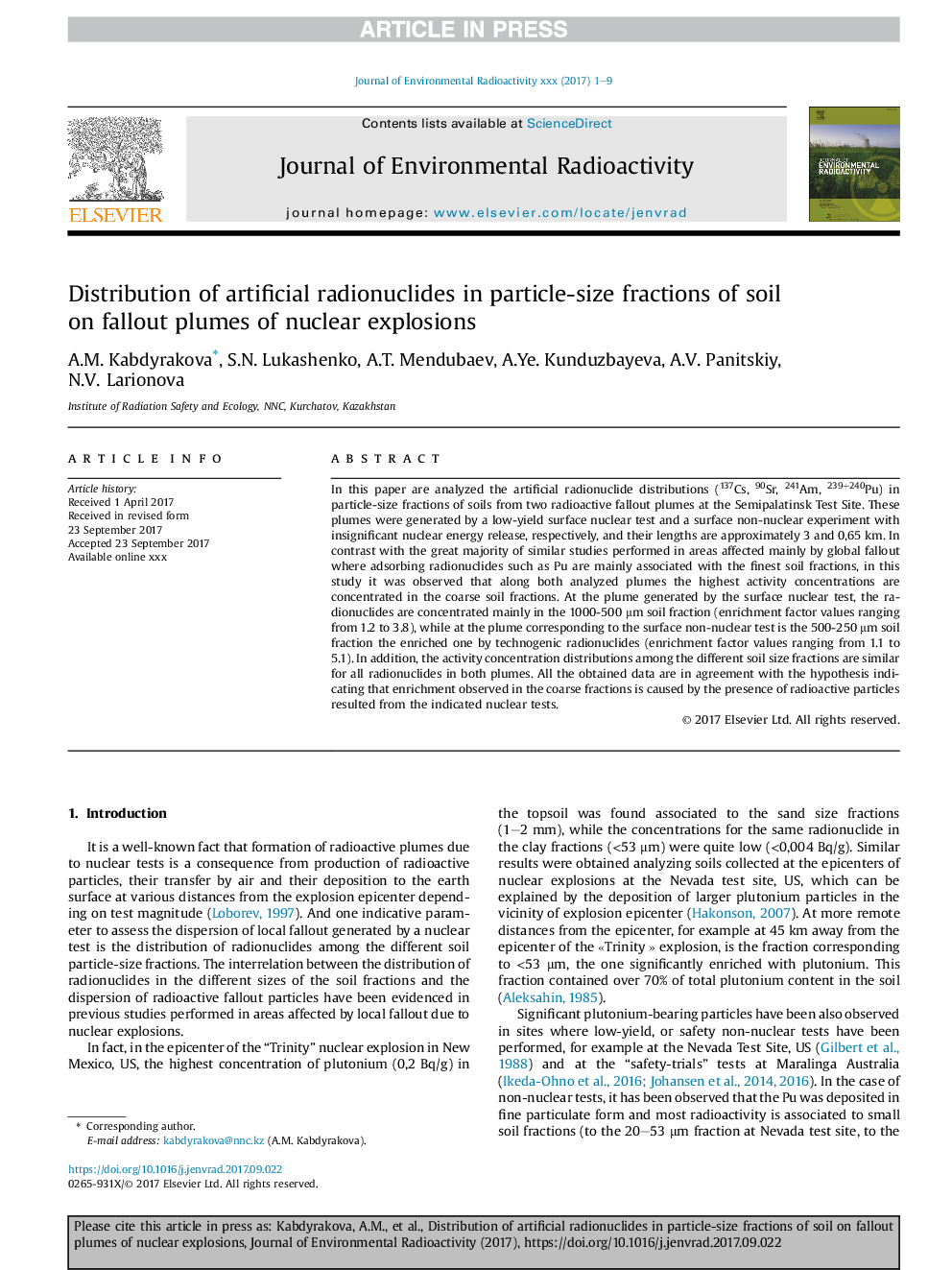| Article ID | Journal | Published Year | Pages | File Type |
|---|---|---|---|---|
| 8080642 | Journal of Environmental Radioactivity | 2018 | 9 Pages |
Abstract
In this paper are analyzed the artificial radionuclide distributions (137Cs, 90Sr, 241Am, 239+240Pu) in particle-size fractions of soils from two radioactive fallout plumes at the Semipalatinsk Test Site. These plumes were generated by a low-yield surface nuclear test and a surface non-nuclear experiment with insignificant nuclear energy release, respectively, and their lengths are approximately 3 and 0,65 km. In contrast with the great majority of similar studies performed in areas affected mainly by global fallout where adsorbing radionuclides such as Pu are mainly associated with the finest soil fractions, in this study it was observed that along both analyzed plumes the highest activity concentrations are concentrated in the coarse soil fractions. At the plume generated by the surface nuclear test, the radionuclides are concentrated mainly in the 1000-500 μm soil fraction (enrichment factor values ranging from 1.2 to 3.8), while at the plume corresponding to the surface non-nuclear test is the 500-250 μm soil fraction the enriched one by technogenic radionuclides (enrichment factor values ranging from 1.1 to 5.1). In addition, the activity concentration distributions among the different soil size fractions are similar for all radionuclides in both plumes. All the obtained data are in agreement with the hypothesis indicating that enrichment observed in the coarse fractions is caused by the presence of radioactive particles resulted from the indicated nuclear tests.
Related Topics
Physical Sciences and Engineering
Energy
Nuclear Energy and Engineering
Authors
A.M. Kabdyrakova, S.N. Lukashenko, A.T. Mendubaev, A.Ye. Kunduzbayeva, A.V. Panitskiy, N.V. Larionova,
